Optimization of ligand density on polymeric nanoparticles (PNPs) is critical for targeting solid tumors. Recently, one paper published paper prepared fluorescent cyanine 5.5 dye and cyclo(arginine–glycine–aspartic acid–phenylalanine–lysine) ligand-modified polyethylene glycol-poly(lactic-co-glycolic acid) (Cy 5.5-cRGDfK-PEG-PLGA) NPs with different ligand concentrations and investigated their cancer-targeting abilities in vitro and in vivo. The PNPs self-assembled in an aqueous solution as round particles and showed an increase in their average size as a function of cRGDfK concentration. In vitro results revealed a gradual increase in the uptake of NPs in MDA-MB-435 breast cancer cells in a time- and ligand concentration-dependent manner. In vivo, NPs with 6 w/w% cRGDfK concentration showed prolonged uptake by the cancer tissue during the 7-day test period. These results suggest that Cy 5.5-cRGDfK6-PEG-PLGA NPs could serve as valuable drug carriers and diagnostic agents for the clinical treatment and targeting of solid cancers. Journal of Industrial and Engineering Chemistry. 81, 25 January 2020, Pages 178-184.
NSP’s Pegylated Lipid contributed to paper in Nano Letters

Ultrathin Tellurium Oxide/Ammonium Tungsten Bronze Nanoribbon for Multimodality Imaging and Second Near-Infrared Region Photothermal Therapy
Developing nanophotothermal agents (PTAs) with satisfied photothermal conversion efficiency (PTCE) in the second NIR window (1000–1350 nm, NIR II) holds great promise for enhanced photothermal therapy effect. Herein, we develop a NIR-II PTA with advanced PTCE, based on a new two-dimensional ultrathin tellurium oxide/ammonium tungsten bronze (TeO2/(NH4)xWO3) nanoribbons (TONW NRs). The doped ammonia ions-mediated-free-electrons injection into the lowest unoccupied molecular orbital band of WO3 combined with the electronic transitions between W6+ ions and the lone pair of electrons in Te atoms achieve excellent NIR absorption of TONW NRs resulting from localized surface plasmon resonance. The polyethylene glycol functionalized TONW NRs (PEG-TONW NRs) exhibit good stability and biocompatibility, displaying a PTCE high to 43.6%, surpassing many previous nano-PTAs active in the NIR II region, leading to remarkable tumor ablation ability both in vitro and in vivo. Meanwhile, advanced X-ray computed tomography (CT) and photoacoustic (PA) imaging capability of PEG-TONW NRs were also realized. Given the admirable photothermal effect in NIR II region, good biocompatibility, and advanced CT/PA imaging diagnosis capability, the novel PEG-TONW NRs is promising in future personalized medicine applications. Nano Lett.2019, 19, 2, 1179-1189.
NSP’s product contributed to Nature Materials

Hyaluronic acid–bilirubin nanomedicine for targeted modulation of dysregulated intestinal barrier, microbiome and immune responses in colitis
While conventional approaches for inflammatory bowel diseases mainly focus on suppressing hyperactive immune responses, it remains unclear how to address disrupted intestinal barriers, dysbiosis of the gut commensal microbiota and dysregulated mucosal immune responses in inflammatory bowel diseases. Moreover, immunosuppressive agents can cause off-target systemic side effects and complications. Recently, a paper published in Nature Biomaterials, reported the development of hyaluronic acid–bilirubin nanomedicine (HABN) that accumulates in inflamed colonic epithelium and restores the epithelium barriers in a murine model of acute colitis. Surprisingly, HABN also modulates the gut microbiota, increasing the overall richness and diversity and markedly augmenting the abundance of Akkermansia muciniphila and Clostridium XIVα, which are microorganisms with crucial roles in gut homeostasis. Importantly, HABN associated with pro-inflammatory macrophages, regulated innate immune responses and exerted potent therapeutic efficacy against colitis. The work sheds light on the impact of nanotherapeutics on gut homeostasis, microbiome and innate immune responses for the treatment of inflammatory diseases. Nanosoft Polymers’ Cholesterol-PEG-NH2 was used to conjugate hyaluronic acid for HABN. Nat Mater. 2019 Aug 19. doi: 10.1038/s41563-019-0462-9.
NSP’s PEGylated polylysine contributed to paper in Nature Communications

Mammalian cells don’t have exterior cell walls for protection, and environmental assaults can easily damage or destroy mammalian cells. Thus, the ability to develop a biomimetic cell wall (BCW) on their plasma membrane as a shield can advance various applications. A recent study published in Nature Communications has synthesized BCW with a framing template and a crosslinked matrix for shielding live mammalian cells. The framing template is a supramolecular DNA structure. The crosslinked matrix is a polyelectrolyte complex made of alginate and Pegylated-polylysine (PLL-MPEG, Nanosoft Polymers). As the entire procedure of BCW synthesis is strictly operated under physiological conditions, BCW-covered mammalian cells can maintain high bioactivity. More importantly, the data show that BCW can shield live mammalian cells from not only physical assaults but also biological assaults. Thus, this study has successfully demonstrated the synthesis of BCW on live mammalian cells with great potential of shielding them from environmental assaults. Nature Communications (2019) 10:2223.
Synergetic ER-targeting Liposome Nanocarriers with Anti-phagocytic property for Enhanced Tumors Theranostics
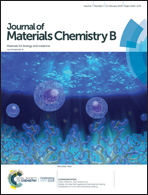
Multifunctional nanocarriers have been widely applied due to their enhanced effect on tumor therapeutics. Nevertheless, owing to the natural immune clearance mechanisms in living bodies, nanocarriers tend to be eliminated during blood circulation, thereby impeding their effective arrival at the tumor sites. In a recently published paper, the authors constructed a synergetic targeted liposome nanocarrier system named SELS functionalized with both a tumor identification ligand (anti-ER (Estrogen Receptor) antibody) and an immune targeting ligand (Self-Peptide (SP)). DSPE-PEG-Mal (Nanosoft Polymers) was used to conjugate targeting ligand. The anti-ER antibody could recognize and bind ER-positive breast cancer tissues in a specific way. SP could activate the CD47-SIRPα immune response, which reduced phagocytosis of the nanoparticles by macrophages. Both the enhanced targeting ability and anti-phagocytosis behavior could improve the tumor uptake of the nanocarriers and prevent their immune clearance in living systems. Therefore, drug-loaded SELS enabled improved tumor imaging and therapeutic performance in living systems. Journal of Materials Chemistry B, 48(7 ) 1056-1063. 2019.
NSP’s PLL-g-PEG was used in research for Long-Term Cell Fate Tracking of Individual Renal Cells Using Serial Intravital Microscopy.

Intravital multiphoton microscopy of the kidney is a powerful technique to study alterations in tissue morphology and function simultaneously in the living animal and represents a dynamic and developing research tool in the field. Recent technological advances include serial intravital multiphoton microscopy of the same kidney regions over several weeks and combined with ex vivo histology for cellular biomarker expression of the same cells, which had been subject to serial imaging before. Thus, serial intravital multiphoton microscopy followed by ex vivo histology provides unique tools to perform long-term cell fate tracing of the same renal cells during physiological and pathophysiological conditions, thereby allowing the detection of structural changes of the same renal cells over time. Examples include renal cell migration and proliferation while linking these events to local functional alterations and eventually to the expression of distinct cellular biomarkers. Recently a protocol for long-term cell fate tracking of individual renal cells was published using serial intravital microscopy. The authors provided a detailed step-by-step protocol to facilitate serial intravital multiphoton microscopy for long-term in vivo tracking of renal cells and subsequent ex vivo histology for immunohistological staining of the same cells in the fixed tissue. Schiessl I.M., Fremter K., Burford J.L., Castrop H., Peti-Peterdi J. (2019) Long-Term Cell Fate Tracking of Individual Renal Cells Using Serial Intravital Microscopy. In: . Methods in Molecular Biology. Humana Press. https://doi-org.go.libproxy.wakehealth.edu/10.1007/7651_2019_232.
NSP’s PLL-g-PEG used in research to develop non-fouling microporous membranes to alter cell-substrate behavior.
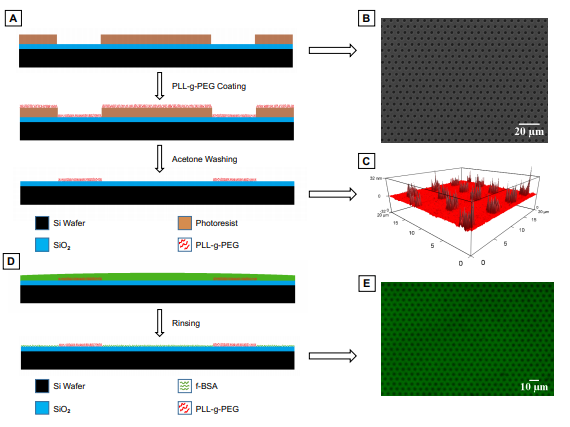 Porous membranes are ubiquitous in cell co-culture and tissue-on-a-chip studies. These materials are predominantly chosen for their semi-permeable and size exclusion properties to restrict or permit transmigration and cell-cell communication. In a recent study, researchers fabricated micropatterned non-fouling polyethylene glycol (PEG) islands (based on PLL-g-PEI, Nanosoft Polymers) to mimic pores in order to decouple the effect of surface discontinuity from grip provided by pore wall edges. Similar to porous membranes, they found that the PEG islands hindered fibronectin fibrillogenesis with cells on patterned substrates producing shorter fibrils. Additionally, cell migration speed over micropatterned PEG islands was greater than unpatterned controls, suggesting that disruption of cell-substrate interactions by PEG islands promoted a more dynamic and migratory behavior, similarly to cells
Porous membranes are ubiquitous in cell co-culture and tissue-on-a-chip studies. These materials are predominantly chosen for their semi-permeable and size exclusion properties to restrict or permit transmigration and cell-cell communication. In a recent study, researchers fabricated micropatterned non-fouling polyethylene glycol (PEG) islands (based on PLL-g-PEI, Nanosoft Polymers) to mimic pores in order to decouple the effect of surface discontinuity from grip provided by pore wall edges. Similar to porous membranes, they found that the PEG islands hindered fibronectin fibrillogenesis with cells on patterned substrates producing shorter fibrils. Additionally, cell migration speed over micropatterned PEG islands was greater than unpatterned controls, suggesting that disruption of cell-substrate interactions by PEG islands promoted a more dynamic and migratory behavior, similarly to cells
migrating on microporous membranes. Preferred cellular directionality during migration was nearly identical between substrates with identically patterned PEG islands and micropores, further confirming disruption of cell-substrate interactions as a common mechanism behind the cellular responses on these substrates. Interestingly, cell spreading and the magnitude of migration speed was significantly greater on porous membranes compared to PEG islands with identical feature size and spacing, suggesting pore edges enhanced cellular grip. These results provide a more complete picture on how porous membranes affect cells which are grown on them in an increasing number of cellular barrier and co-culture studies. https://www.biorxiv.org/content/early/2019/02/28/563361.full.pdf.
NSP’s functional DSPE-PEG-Folate was used for folate recepotr-targeting nanocomplex to enhance the cytotoxicity, efficacy, and selectivity of antiancer leaf extract.
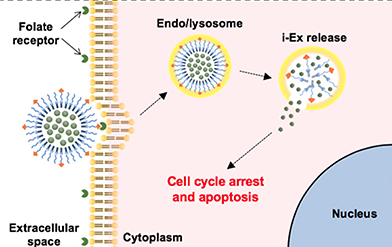
Nanomedicine holds great potential for drug delivery to achieve more effective and safer cancer treatment. Recently, one research group in Japan developed a folate receptor-targeting nanocomplex which carries alcoholic extract of Withania somnifera leaves (i-Extract) that has selective cancer cell killing activity, suspends well in water and possesses enhanced selective anticancer activity in both in vitro and in vivo assays. Comparative analyses of folate receptor (FR)-positive and -negative cells revealed that FRi-ExNC caused a stronger decrease in Cyclin D/Cdk4 and anti-apoptotic protein Bcl-2, as well as a higher increase in the growth arrest regulating protein p21WAF1 and pro-apoptotic protein PARP-1, in FR-enriched cancer cells. The results demonstrate that FRi-ExNC could be a natural source-based nanomedicine for targeted cancer therapy. NSP’s DSPE-PEG-Folate was used to construct the nanocomplex for folate receptor-targeting. Front. Oncol., 04 July 2019 | https://doi.org/10.3389/fonc.2019.00602.
NSP’s Polymer were used in a patent for formulation of insoluble camptothecin compound with double core-shell structure
Recently, An patent (US20180369231A1) published by SNBioScience Inc. has invented a drug delivery system having a double core-shell structure and, specifically, to a double nano-drug delivery system having an inner core-shell containing a poorly soluble camptothecin compound and a water-soluble camptothecin compound inside and an amphiphilic polymer shell, and to a manufacturing method therefor. The double core-shell structured particles manufactured by the present invention form very stable particles and show a mono-distribution of particles before and after freeze-drying. The particles of the present invention show excellent results compared with existing monolayer micelles in animal efficacy tests and pharmacokinetic tests, and do not use a surfactant causing hypersensitivity, and thus the use of the particles of the present invention can provide a pharmaceutical composition or a drug delivery system platform, which are safe for the human body. NSP’s polymers were used in the formulation. (https://patents.google.com/patent/US20180369231A1/en).
NSP’s DSPE-PEG-Mal were used to develop MMP-2-Controlled Transforming Micelles for Heterogeneic Targeting and Programmable Cancer Therapy
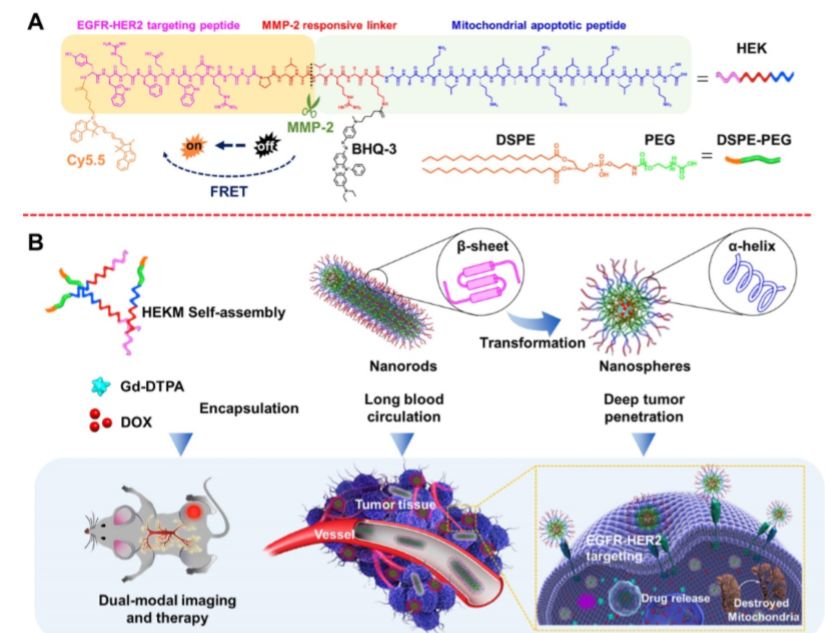
Nanoparticle (NP)-based tumor theranostics have ushered in new opportunities for personalized nanomedicine due to their rational design and functionalization. Through the active-peptide-functionalization, a research group developed a nanoscale micelles system (named HEKM) which consists of tumor microenvironment-regulated shape-changing with specific recognition abilities for enhanced cellular targeting, internalization and therapy of heterogeneic tumors. As a result, HEKMs could recognize and bind the tumor heterogeneity marker EGFR-HER2 complex, which led to an enhanced tumor targeting effect. In particular, HEKMs could self-assemble into nanorods under normal physiological conditions while transform into nanospheres in the tumor extracellular microenvironment by a sensitive response to matrix metalloproteinase-2 (MMP-2). The nanorods could prolong the blood circulation time while the nanospheres could accelerate tissue penetration in tumors. In vivo dual-modal targeted imaging was realized by FRET-fluorophore conjugation and gadolinium loading in HEKMs. Tumor cell apoptosis was achieved by proapoptotic element integration. The in vitro and in vivo studies both demonstrated that these rationally designed, shape-changing and targeting micelles could achieve maximized drug efficacy and minimum side effects. Theranostics 2019; 9(6): 1728-1740. doi: 10.7150/thno.30915.
NSP’s Lipid were used to develop Endotoxin-adsorbing macrophage-mimetic hybrid liposome for sepsis treatment
 Sepsis is a life-threatening condition resulting from bacterial or fungal infections. Common treatments for sepsis, such as antibiotic therapy, are far from satisfactory. Because endotoxin (LPS) is a major pathogenic factor in sepsis caused by gram-negative bacterial infections, neutralization of LPS is a promising therapeutic target. To effectively eliminate LPS, in a recent study published in Chemical Engineering Journal, a macrophage-mimetic hybrid liposome (M-Lipo) was developed by fusing a macrophage membrane (M-membrane) with artificial lipids (Nanosoft Polymers). The M-membrane could provide an intrinsic binding site for LPS. The artificial PEGylated lipid could stabilize the natural membrane and prolong the circulation of M-Lipo in the bloodstream. These two membranes could complement one another and extend their biofunction as they were integrated. The results showed that M-Lipo had surface proteins similar to those of macrophages and could substantially adsorb LPS. With the help of the PEGylated lipids (Nanosoft Polymers), M-Lipo presented much better stability than the bare M-membrane vesicle. In addition, the pharmacokinetic results revealed that M-Lipo clearly had longer retention (∼16%) in blood (at 12 h) than the natural M-membrane (∼3.3%). By combining these properties, the hybrid M-Lipo not only reduced the toxicity of LPS in vitro but also protected the mouse against endotoxic shock in vivo. In conclusion, the hybrid liposome M-Lipo has the advantages of both natural membranes and artificial materials, eventually leading to the successful treatment of sepsis. Chemical Engineering Journal (31), 15-25, 2019.
Sepsis is a life-threatening condition resulting from bacterial or fungal infections. Common treatments for sepsis, such as antibiotic therapy, are far from satisfactory. Because endotoxin (LPS) is a major pathogenic factor in sepsis caused by gram-negative bacterial infections, neutralization of LPS is a promising therapeutic target. To effectively eliminate LPS, in a recent study published in Chemical Engineering Journal, a macrophage-mimetic hybrid liposome (M-Lipo) was developed by fusing a macrophage membrane (M-membrane) with artificial lipids (Nanosoft Polymers). The M-membrane could provide an intrinsic binding site for LPS. The artificial PEGylated lipid could stabilize the natural membrane and prolong the circulation of M-Lipo in the bloodstream. These two membranes could complement one another and extend their biofunction as they were integrated. The results showed that M-Lipo had surface proteins similar to those of macrophages and could substantially adsorb LPS. With the help of the PEGylated lipids (Nanosoft Polymers), M-Lipo presented much better stability than the bare M-membrane vesicle. In addition, the pharmacokinetic results revealed that M-Lipo clearly had longer retention (∼16%) in blood (at 12 h) than the natural M-membrane (∼3.3%). By combining these properties, the hybrid M-Lipo not only reduced the toxicity of LPS in vitro but also protected the mouse against endotoxic shock in vivo. In conclusion, the hybrid liposome M-Lipo has the advantages of both natural membranes and artificial materials, eventually leading to the successful treatment of sepsis. Chemical Engineering Journal (31), 15-25, 2019.
NSP’s functional lipid-PEG were contributed to gold nanorods for photothermal-based antibacterial activity
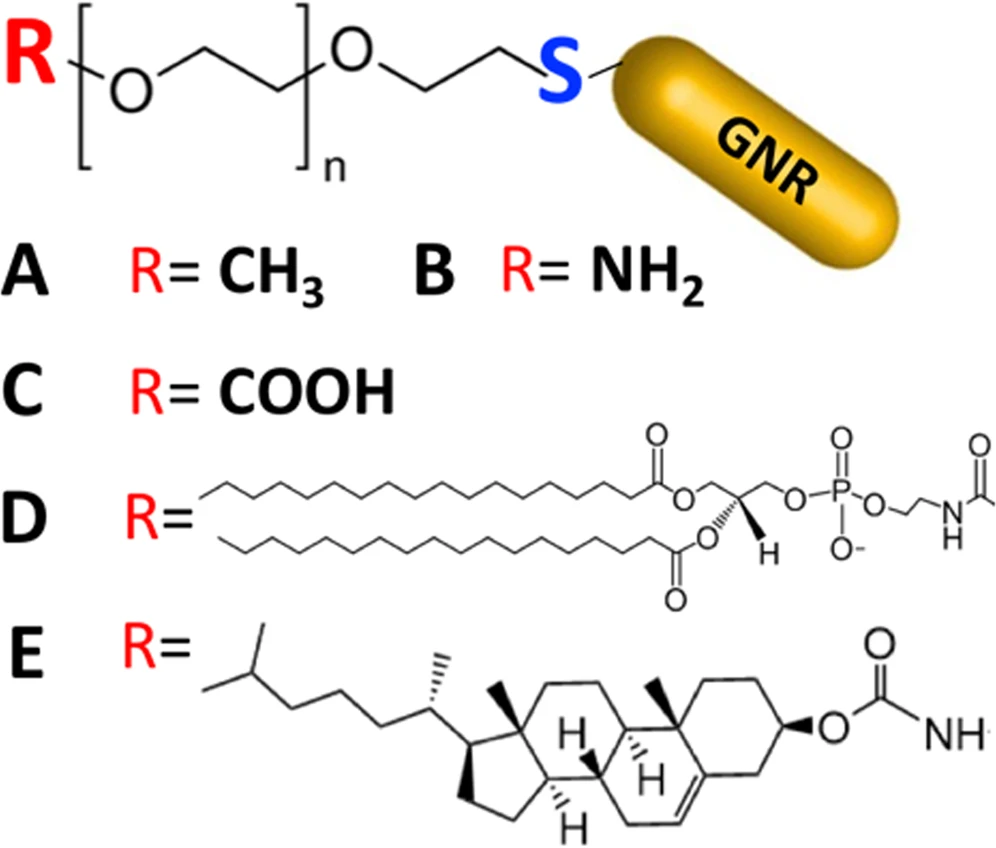
Skin is considered as the ideal site for non-invasive skin therapeutic platforms. In a recent study published in Scientific Reports, a library of gold nanorods (GNR) decorated with polyethylene glycol-thiol (PEG-SH) containing different functionalities were synthesized and characterized. The results demonstrated that cholesterol-PEG coated GNR were preferentially loaded up in the upper layers of skin (stratum corneum), while phospholipid-PEG coated counterparts were drastically deposited in skin dermis. Neutral methoxy-PEG-coated GNR were distributed in both SC and dermis skin layers, while charged GNR (anionic-carboxylic acid-PEG-GNR and cationic-amine-PEG-GNR) revealed a minimal accumulation into skin. DSPE-PEG-GNR and Chol-PEG-GNR demonstrated antibacterial activities against Staphylococcus aureus (S aureus) at MIC values of 0.011 nM and 0.75 nM, respectively. Photothermal treatment for S. aureus at sub-MIC concentrations resulted in a significant bactericidal effect when using Chol-PEG-GNR but not DSPE-PEG-GNR. Gold-based nanoscale systems have great value as a promising platform for skin diseases therapy. Scientific Reportsvolume 9, Article number: 5796 (2019).
NSP’s functional PLA-PEG-NH2 was used in Nanoengineering of Mesenchymal Stem Cells via Surface Modification for Efficient Cancer Therapy
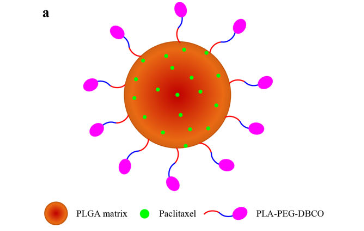
Mesenchymal stem cells (MSCs) can be used for tumor‐specific delivery of small molecular weight anticancer drugs by using nanoparticle‐encapsulated forms of the drugs. In a recent study, an advanced nanoengineering strategy is reported here that involves generation of MSCs expressing azide functional groups on their surface and conjugation of dibenzyl cyclooctyne‐functionalized nanoparticles by PLA-PEG-NH2 (Nanosoft Polymers) to the azide groups using copper‐free click chemistry. This novel strategy significantly improves the payload capacity of MSCs (≈48 pg of paclitaxel (PTX) per cell) relative to that reported previously (<1–20 pg per cell), without affecting their native phenotype. In vivo, the nanoengineered MSCs significantly inhibit tumor growth (p < 0.05) and improve survival (p < 0.0001) compared to free or nanoparticle encapsulated PTX and Abraxane in an orthotopic ovarian tumor model. In summary, the nanoengineering strategy reported here allows for improved delivery and anticancer efficacy of conventional chemotherapeutic agents using MSCs as drug carriers. Adv. Therap.2019, 1900043. https://onlinelibrary.wiley.com/doi/epdf/10.1002/adtp.201900043
NSP’s functional lipid-PEG were used to develop targeted antifungal liposomes for enhanced efficacy
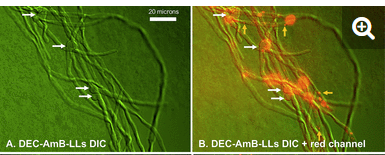
Dectin-1 is a mammalian innate immune receptor in the membrane of some leukocytes that binds as a dimer to beta-glucans found in fungal cell walls, signaling fungal infection. A recent published study developed a Dectin-1 targeted liposomes which can specifically bind to fungal cell walls. The targeted liposomes were used to deliver amphotericin B (AmB). Using a novel protocol, the researcher coated AmBLLs with Dectin-1’s beta-glucan binding domain to make DEC-AmB-LLs. DEC-AmBLLs bound rapidly, efficiently, and with great strength to Aspergillus fumigatus and to Candida albicans and Cryptococcus neoformans, highly divergent fungal pathogens of global importance. In contrast, untargeted AmB-LLs and bovine serum albumin (BSA)-coated BSA-AmB-LLs showed 200-fold-lower affinity for fungal cells. DEC-AmBLLs reduced the growth and viability of A. fumigatus an order of magnitude more efficiently than untargeted control liposomes delivering the same concentrations of AmB, in essence decreasing the effective dose of AmB. Future efforts will focus on examining pan-antifungal targeted liposomal drugs in animal models of disease. American Society for Microbiology 2019 (4) Issue 1 e00025-19.
NSP’s PEGylated lipids were used to develop endotoxin-adsorbing macrophage-mimetic hybrid liposome for sepsis treatment
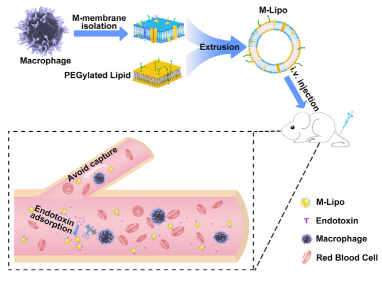
Sepsis is a life-threatening condition resulting from bacterial or fungal infections. In a recent published, a macrophage-mimetic hybrid liposome (M-Lipo) was developed by fusing a macrophage membrane (M-membrane) with artificial lipids (Nanosoft Polymers). The M-membrane could provide an intrinsic binding site for LPS. The artificial PEGylated lipid could stabilize the natural membrane and prolong the circulation of M-Lipo in the bloodstream. These two membranes could complement one another and extend their biofunction as they were integrated. The results showed that M-Lipo had surface proteins similar to those of macrophages and could substantially adsorb LPS. With the help of the PEGylated lipids (Nanosoft Polymers), M-Lipo presented much better stability than the bare M-membrane vesicle. In addition, the pharmacokinetic results revealed that M-Lipo clearly had longer retention (∼16%) in blood (at 12 h) than the natural M-membrane (∼3.3%). By combining these properties, the hybrid M-Lipo not only reduced the toxicity of LPS in vitro but also protected the mouse against endotoxic shock in vivo. In conclusion, the hybrid liposome M-Lipo has the advantages of both natural membranes and artificial materials, eventually leading to the successful treatment of sepsis. Chemical Engineering Journal (371), 2019, 15-25.
NSP’s polymers were used to develop dual-targeted biodegradable micelles for anticancer drug delivery
Polymeric micelles have been widely studied and developed for targeted delivery of cytostatic drugs. However, due to heterogeneity of tumor cells, targeting efficiency may be enhanced by using different types of targeting agents on the same drug delivery system. Recently, one study published in Materials Letters developed dual targeted micelles for anticancer drug delivery. The aim of the study was to obtain and characterize paclitaxel-loaded biodegradable poly(L-lactide)-co-poly(ethylene glycol) (PLA-PEG) micelles functionalized with folic acid and biotin (Nanosoft Polymers). The developed dual targeted micelles show low critical micelle concentration, high loading capacity of paclitaxel and prolonged in vitro drug release. The cytotoxicity of paclitaxel-loaded micelles was confirmed against folate- and biotin-receptor positive OVCAR3 cells, which indicates their usefulness for targeted delivery of cytostatic drug. Materials Letters 241 (2019) 187-189.
